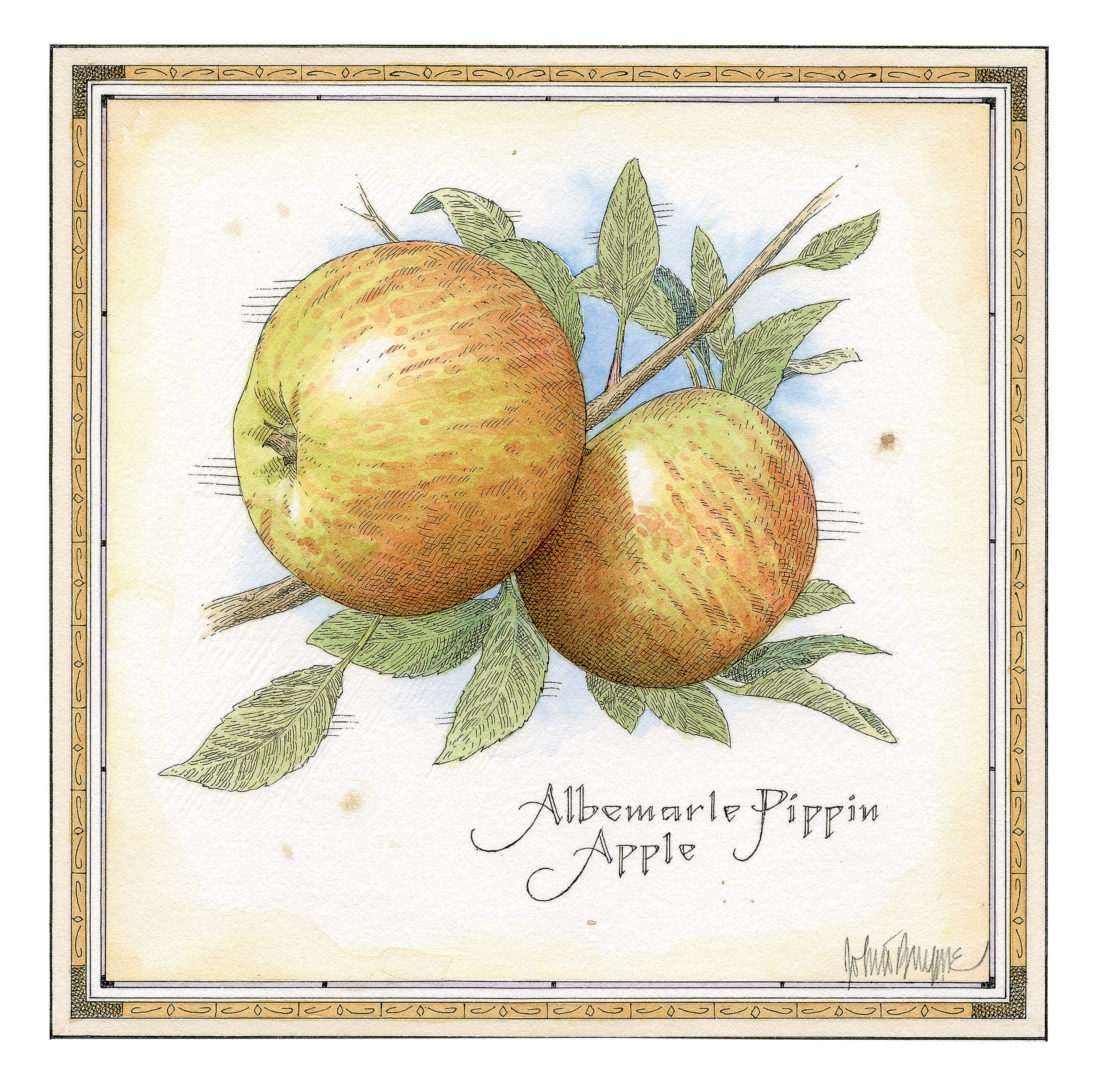Albemarle Pippin
As a kid, Aaron Cross looked forward to slurping down
an apple cider slushie at Asheville, North Carolina’s annual apple festival. This fall, the executive chef of Fossett’s, at Keswick Hall resort in Charlottesville, Virginia, is looking forward to cooking with one of the most storied apples in the South: the Albemarle Pippin (aka the Newtown Pippin).
“[Thomas] Jefferson had a massive orchard layout, and this was one of his favorite apples,” Cross says. The Founding Father’s obsession wasn’t based on looks—this apple is homely compared with its bright red brethren—but rather on the fruit’s floral-tart flavor, which turns perfectly sweet when cooked. Pan-fry it with maple breakfast sausage in a greased skillet, or bake it in a Thanksgiving pie. “The moisture content and structure allow it to hold up,” Cross says, “unlike a Red Delicious, which would dissolve.” Today you’re most likely to find this early-eighteenth-century heirloom in Virginia, North Carolina, Georgia, and Kentucky. The Albemarle has unrivaled longevity, so bag more than you need, stash in a cool dry place, and enjoy through February. It’s the apple that keeps on giving.

More of Fall’s Finest:
Arkansas Black
This deep red, nearly black apple was first grown in an orchard just outside of Bentonville, Arkansas, in 1870. With tart, hard flesh—some have compared it to a Jolly Rancher—it’s ideal for baking into a pie or spotlighting in a bread pudding. Its popularity has increased in recent years, so it shouldn’t be hard to find at farmers’ markets and roadside stands in late October and November.
 Grimes Golden
Grimes Golden
This heirloom originated in 1790 in Brooks County, West Virginia, where a granite monument still stands in recognition. A probable parent of the Golden Delicious, the yellow-skinned apple has a rich sweet flavor, making it an easy straight-from-the-tree dessert. It’s also a stellar addition to salads and chicken salad, and it can be used for applesauce or cider (it is very juicy and ferments to 9 percent alcohol). Though not always easy to find—you’ll need to ask local farmers—it grows well throughout the South, generally ripening in early October.








